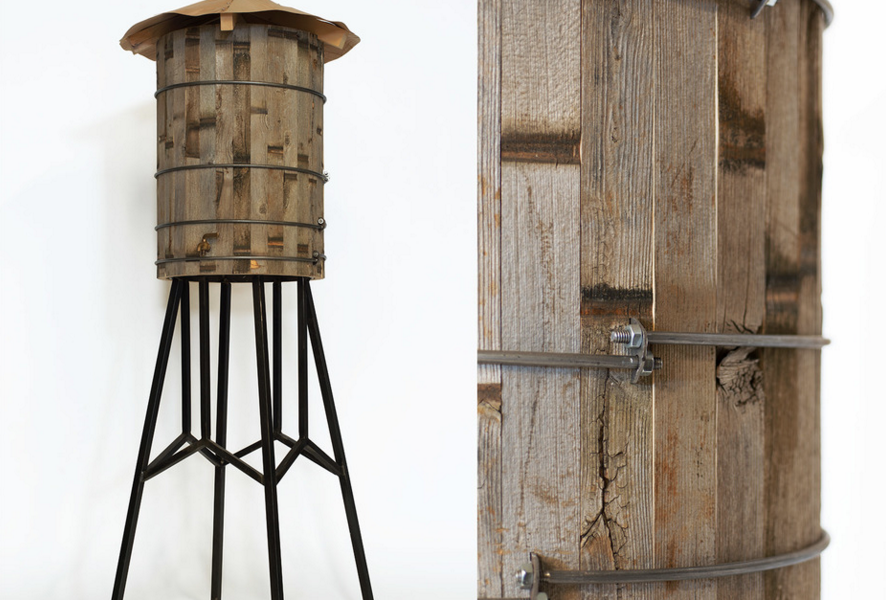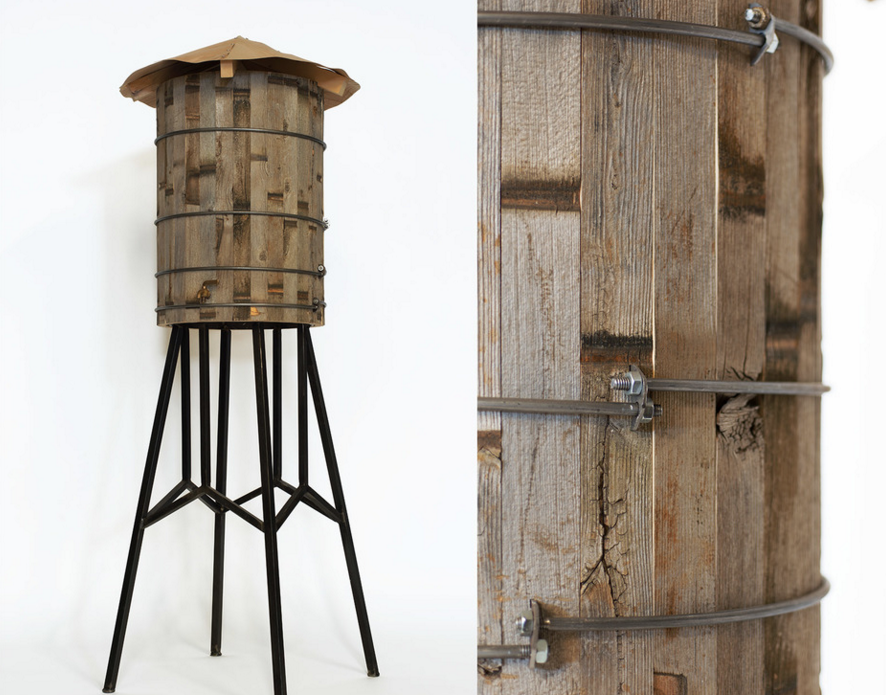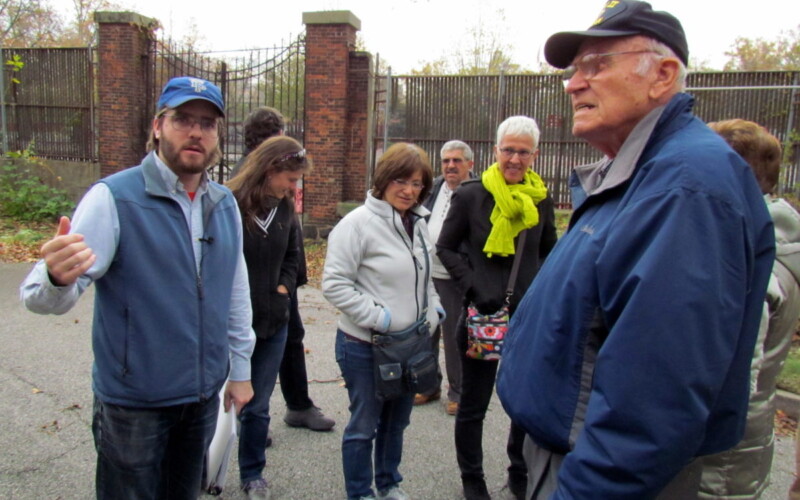We recently had the opportunity to visit a unique business in the Brooklyn Navy Yard that will be a featured tenant on our Inside Industry Tour series, Bien Hecho, a woodworking outfit that specializes in making furniture, millwork, cabinetry, and other custom carpentry from reclaimed and sustainably-sourced wood. Founder John Randall sat down with us to talk about their business making beautiful work, and the Bien Hecho Academy.
Bien Hecho was founded by John nine years ago. Inspired by his travels to Spanish-speaking countries, and his efforts to master the language as an adult, John strives to live up to both meanings of his company’s name – create well-made (hecho bien) projects, and do a job well done (bien hecho). Located inside the Brooklyn Navy Yard’s Building 3, their workshop is filled with wood and machinery that you won’t find in most of the other shops clustered in this part of the building. With a small team of just two full-time staff and a few part-timers, the company has nevertheless taken on some big and beautiful projects.
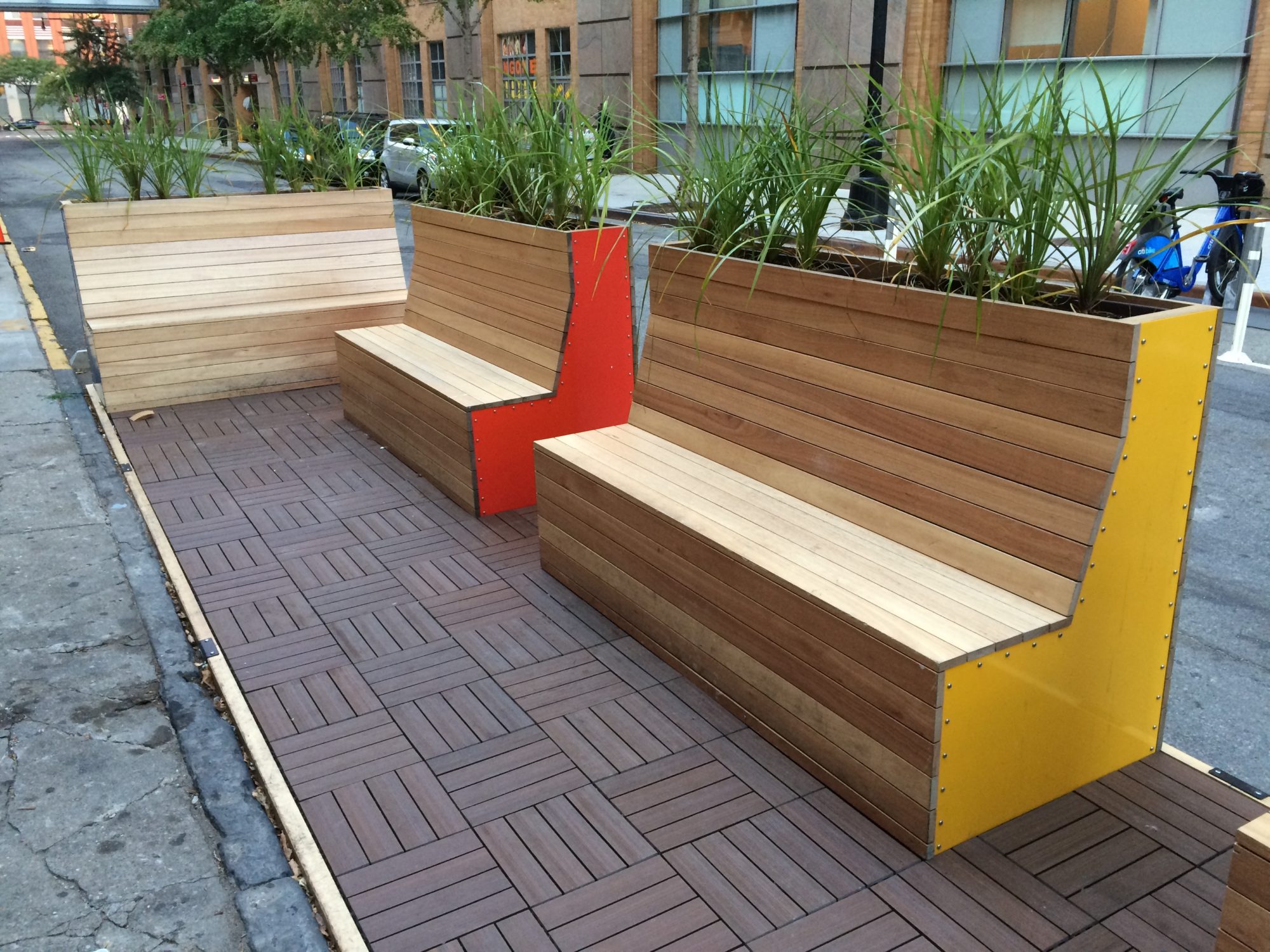
While they often take commissions from private clients for stand-alone furniture pieces or interior work, some of their work has been on very public display. In 2015, they built the outdoor bar and cantina that was a hit with the more than 500,000 people who visited the New York Botanic Garden’s blockbuster Frida Kahlo exhibit. And you may have noticed last summer that there were some missing parking spaces in Downtown Brooklyn, replaced instead with Street Seats installations – a platform with a seating area and planters extending out into the street, commissioned by the Downtown Brooklyn Partnership and the city DOT.
One place where you can see a lot of Bien Hecho’s craftsmanship on display is at BLDG 92. In addition to constructing the visitor services desk in the lobby and many cabinets throughout the building, they also built the front door to the original BLDG 92. Constructed in 1857, the former Marine Commandant’s Residence had an impressive oak door facing Flushing Avenue that had disappeared at some point in the distant past. As part of the building’s rebirth as the Navy Yard’s museum and exhibition center, many of its original exterior details were restored, including the door. Using historic architectural drawings from the building’s construction, Bien Hecho was able recreate the door in its original heft and beauty.
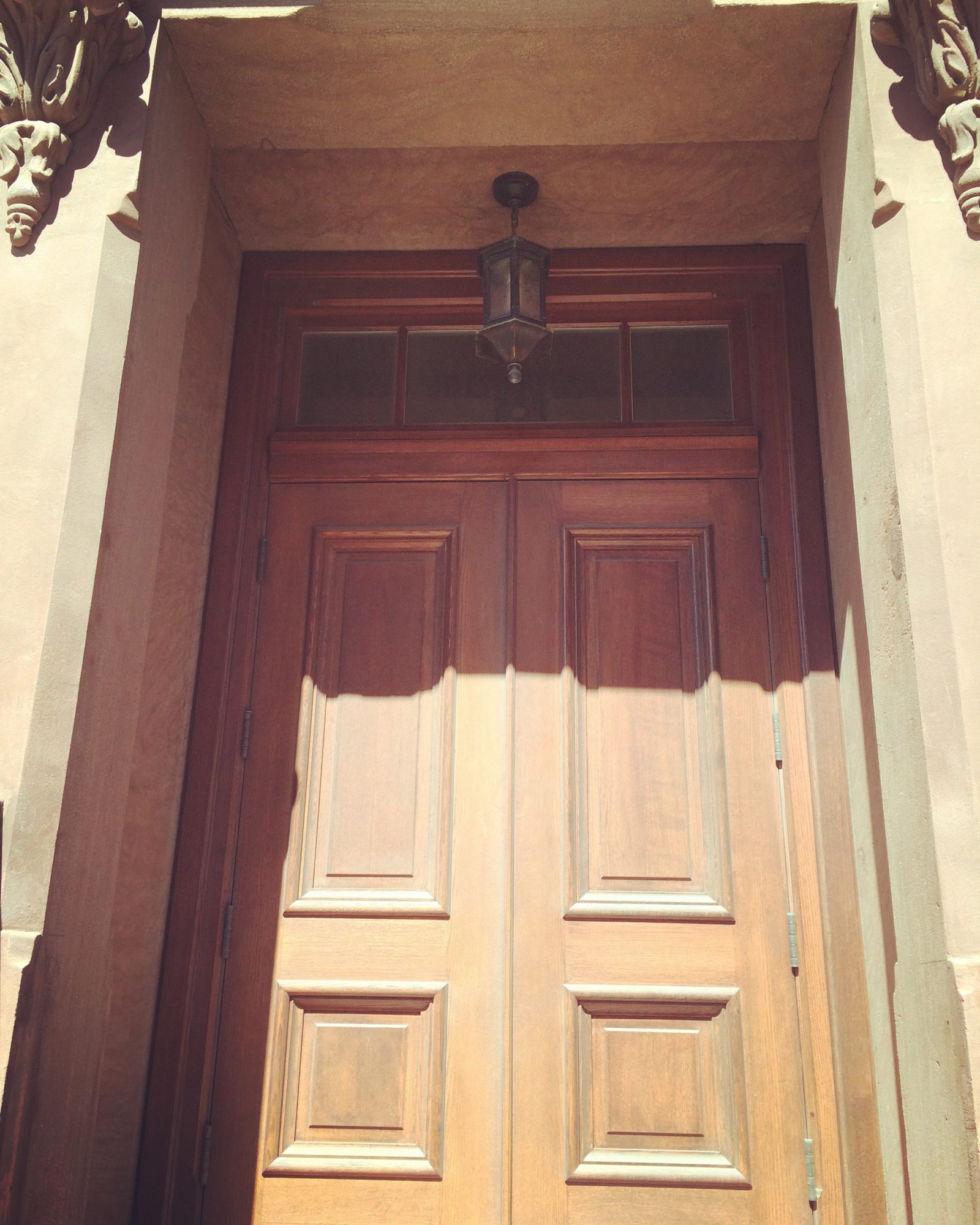
Among the more than 300 tenants that call the Navy Yard home, there are a number of woodworkers and furniture makers that have developed into a close-knit community. With different equipment, materials, and specialties, they often share and sub-contract work with one another. Many wood shops, John notes, “will take on projects they don’t have the capacity for, knowing their neighbors can help them out.” With hard-to-find equipment for milling wood and attaching veneers – thin strips of expensive wood glued to a less-expensive piece – John is often in-demand by his fellow woodworkers.
Being a part of this community also helps Bien Hecho track down stashes of wood they can reclaim and repurpose for their unique projects. “It’s a lot of word or mouth,” John says, to track down discarded wood, sometimes from his neighbors, sometimes from dumpsters across town. A few years ago, he got a tip that the boardwalks in Coney Island were being ripped up after Hurricane Sandy severely damaged them, and he found huge piles of wood thrown in the trash. Another time, the wood was a bit closer at hand – the older wooden water towers on the roof of Building 3 were being torn down, and John claimed it. Among other things, that wood became a water tower-shaped water cooler.
Sharing the craft is also a big part of Bien Hecho’s business, with Bien Hecho Academy, which has been teaching adult woodworking classes for nearly two years. Academy courses run for six weeks and meet on weekday evenings. The program has been so popular, they have added different levels – the introductory course offers two sections, on Tuesdays or Thursdays, and students will learn basic principles and practices of woodworking and produce a side table and cutting board (the next session starts March 1). When you graduate to the the intermediate level (Wednesday nights), you will craft a furniture piece of your own design. And for the alumni of both courses, you can opt for independent studio time, to come into the workshop and work on your own projects.
So, who signs up for these classes? “It’s a pretty wide swath of New York,” John said. “It’s as many women as men, if not a few more.”
“It’s a lot of people who have desk jobs and just look at their computer all day, and they want to just do something.”
The Academy offers classes throughout the year, which is a reliable sources of income for Bien Hecho. While the company often does large commissions, it can be difficult to predict when those projects will come in, but a steady flow of students keeps the workshop humming and the business thriving.
“I really enjoy teaching, and I didn’t realize how much I would enjoy it,” John told us. “It’s definitely very gratifying. The work that we do here during the day is gratifying and the teaching is gratifying, but in a different way. You see people, and things start to click with them, and they’re really enjoying themselves.”

